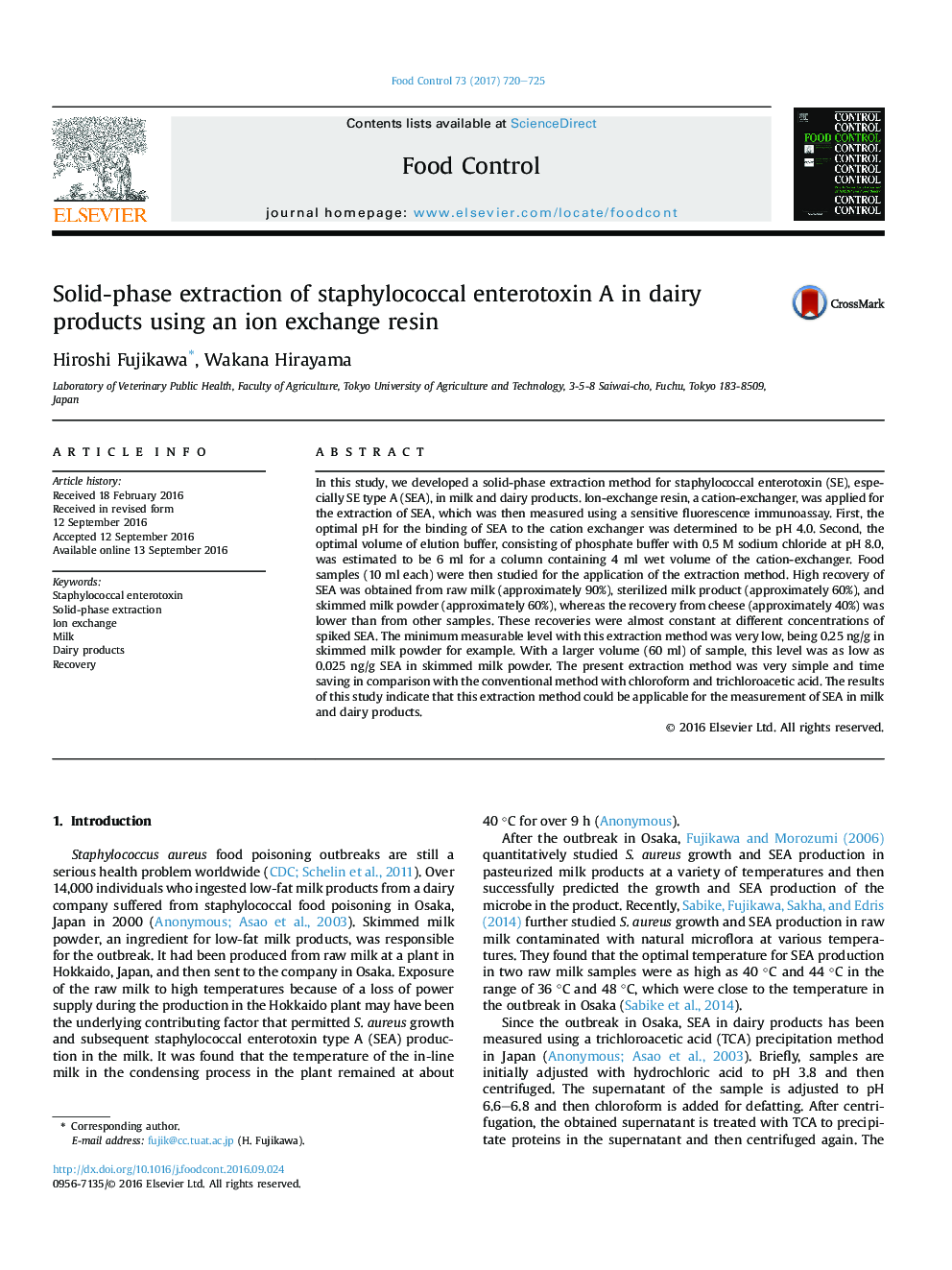| کد مقاله | کد نشریه | سال انتشار | مقاله انگلیسی | نسخه تمام متن |
|---|---|---|---|---|
| 5767699 | 1413202 | 2017 | 6 صفحه PDF | دانلود رایگان |

- A new extraction for staphylococcal enterotoxin in dairy products was developed.
- The extraction using ion-exchange resin was simple and specific.
- The toxin recovery was high, especially from raw milk (about 90%).
- The minimum measurable level was very low, being 0.25Â ng/ml in skimmed milk powder.
- A large scale was capable to measure as low as 0.025Â ng/g SEA in skimmed milk powder.
In this study, we developed a solid-phase extraction method for staphylococcal enterotoxin (SE), especially SE type A (SEA), in milk and dairy products. Ion-exchange resin, a cation-exchanger, was applied for the extraction of SEA, which was then measured using a sensitive fluorescence immunoassay. First, the optimal pH for the binding of SEA to the cation exchanger was determined to be pH 4.0. Second, the optimal volume of elution buffer, consisting of phosphate buffer with 0.5Â M sodium chloride at pH 8.0, was estimated to be 6Â ml for a column containing 4Â ml wet volume of the cation-exchanger. Food samples (10Â ml each) were then studied for the application of the extraction method. High recovery of SEA was obtained from raw milk (approximately 90%), sterilized milk product (approximately 60%), and skimmed milk powder (approximately 60%), whereas the recovery from cheese (approximately 40%) was lower than from other samples. These recoveries were almost constant at different concentrations of spiked SEA. The minimum measurable level with this extraction method was very low, being 0.25Â ng/g in skimmed milk powder for example. With a larger volume (60Â ml) of sample, this level was as low as 0.025Â ng/g SEA in skimmed milk powder. The present extraction method was very simple and time saving in comparison with the conventional method with chloroform and trichloroacetic acid. The results of this study indicate that this extraction method could be applicable for the measurement of SEA in milk and dairy products.
Journal: Food Control - Volume 73, Part B, March 2017, Pages 720-725